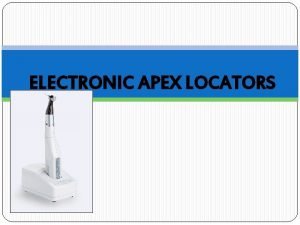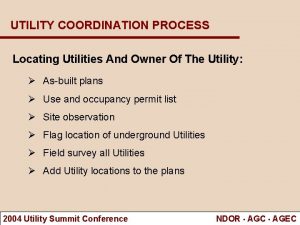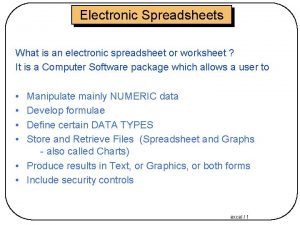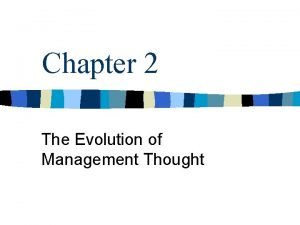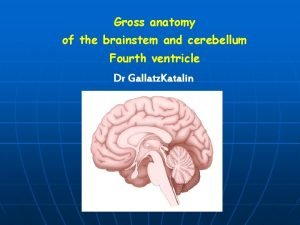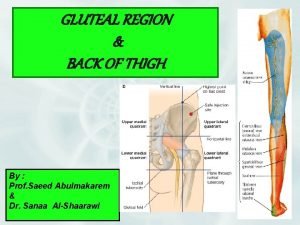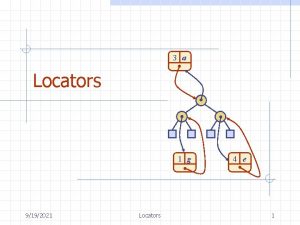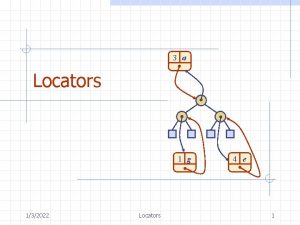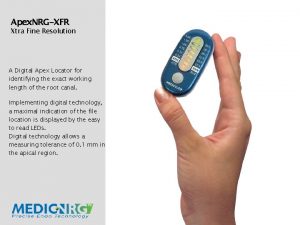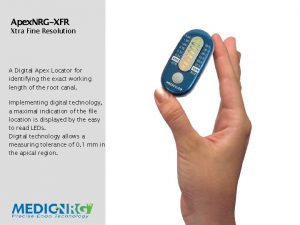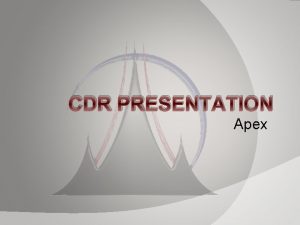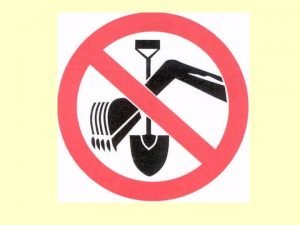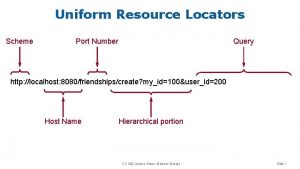ELECTRONIC APEX LOCATORS Contents Introduction Evolution of apex









































- Slides: 41

ELECTRONIC APEX LOCATORS

Contents � Introduction � Evolution of apex locators � Basic function � Classification � Other uses � Contraindications � Common problem solving � Clinical acceptance � The future � Conclusion � References

Introduction The electronic apex locator is an inst when used with appropriate radiographs allows for much greater accuracy of the W/l control. (Mc Donald 1992, Pattern & Mc Donald 1996)

�EAL has attracted a great deal of attention coz they operate on the principles of electricity. �Particularly useful when the apical portion of the canal system is obscured by certain anatomic structures.

Evolution of apex locators � 1918 - Custer -1 st reported the use of electric current—W/L. � 1942 -Suzuki reported a device that measured the electrical resistance between P. dl & oral mucosa

� 1960 - Gordon - 2 nd to report--electrical measurement of root canals. � 1962 -Sunada used a device– became the basis for most apex locators. � 1973 -Inoue - reported a modification-- relate the canal depths to the operator via low frequency audible sounds. eg ; sono-explorer –used this modification

Basic function �using the human body to complete an electrical circuit. �One side --endo instrument & the other --the patients body.

Classification �Modification of classification presented by Mc. Donald (1992) �Classification based on: 3 factors

First generation apex locators � Resistance apex locators. • Mechanism of action Eg sono-explorer

Second generation apex locators � Impedance apex locators � Mechanism of action � Different types.

�Endocator �Apex finder �Endo analyzer �The Digipex �Digipex 2 �Exact-A-Pex �Foramatron IV �The Pio

Third generation apex locators � Frequency – dependent apex locators � Measures the impedance difference between two frequencies or ratio of two electrical impedances � As the file moves towards the apex, the difference becomes greater

(a) Endex: -original 3 rd gen: apex locator --Yamashita et al(1990) �Advantages �Disadvantages

(b) Neosono ultimo Ez

(c) Apex finder A. F. A (All Fluid Allowed) �Multiple frequencies and comparative impedance principle. �LCD panel – indicates the distance of the instrument tip from the apical foramen in 0. 1 mm increments.

� Audio chime indicator. � Mc. Donald et al reported –invitro study – 95% accuracy

(d) Root ZX �Dual frequency. �comparative impedance principle-described by Kobayashi (1991)

�Mechanism of action �Advantages �Disadvantages �Operating instructions

(e) Mark V plus (f) JUSTWO or. JUSTY 11

(g) Endo analyzer 8005

Combined apex locator with handpiece 1. Tri auto Zx

�cordless electric endodontic hand piece � 3 automatic safety systems -(auto-start-stop mechanism) -(auto-torque-reverse mechanism) -(auto-apical-reverse mechanism

Other apex locating hand pieces �SOFY ZX --uses Root ZX �Endy 7000 -- connected to Endy apex locator �Dentport ZX -comprised of two modules Root Zx Tri Auto. ZX

General accuracy of frequency dependent apex locators 1. Effect of pulpal vitality on the accuracy of EAL � Pulpal vitality does not affect EAL accuracy. � In vivo study- Mayeda et al (1993) to determine whether the pulp status makes a difference in the determination.

�Pommer 2005 - AFA Apex finder � A higher accuracy -vital canals - (93. 93%) - -necrotic canals -(76. 6%) � Difference was statistically significant.

2. Effect of different electrolytes. �Torabinejad (1993) – compared Endex measurements with radiographic measurements - located canal accurately in 89. 64% of moist canal.

�Meares and Steiman(2002) - 2. 125% and 5. 25% sodium hypochlorite �Root ZX �No significant difference found

3. Effect foramen size In vitro study - Ngyyen etal (1996), Felippe MC. (1994), Lee et al (2002) � Evaluated the possible influence of the size of the instrument on the measurements. � Reported that there was no difference between the smaller and larger apical foramen.

4. Effect of resorption on the accuracy of EAL Goldberg et al (2002) – �Evaluate - accuracy of the Root ZX apex locator in determining the working length in teeth with apical root resorption. � Measurements - accurate in 62. 7% of cases.

5. Accuracy in Primary teeth Katz et al (1996) • Tested Root ZX in extracted primary teeth that had a different degree of root resorption. • Reported - Root ZX had an accuracy that was similar to the actual length and the radiograph film.

Fourth generation apex locators 1. Bingo 1020 /Ray-pex-4 / Ray-pex-5

2. Elements diagnostic unit and apex locator

Other uses of apex locators Detection of root perforation � Radiographic detection often hinders the existence of the perforation, particularly when it occurs bucco-lingually.

�Kaufman etal (1997) -compared the abilities of Root ZX, Apit III (Endex) and Sono explorer Mark II in detecting root perforation. � The tip of the file ended 0. 06 mm to 0. 6 mm short of the external outline of the root surface. � Use of EAL for making an early detection of root perforation is very effective.

Contraindications of EAL’s For patients who have cardiac pacemakers.

Common problem solving(DCNA (1992), Vol. 36, No. 2, April 293 Neville J. Mc. Donald. ) 1. Unstable electronic signal with rapid wandering signs. 2. Sharp drop of the signal at the apical foramen. 3. Apex sign from the beginning. 4. Premature reading

Clinical acceptance: Use of the electronic apex locator to determine working length has still not gained widespread acceptance worldwide. This may in part be due to early devices which suffered from poor accuracy and did not function properly in the presence of common irrigants. Cost of the instruments and exposure to the technology are also factors.

The future for electronic apex locators �The future of apex locators is very bright, significant improvement in the reliability and accuracy of apex locators took place with the development of 3 rd generation models. It is probable that more dentists will now use apex locators. In the management of endodontic cases, at this time,

� However, the conclusion of studies have not demonstrated that apex locators are clearly superior to radiographic techniques, nor can they routinely replace radiographs in working length determination. It has been demonstrated that they are at least equally accurate future apex locators should be able to determine working length in all electronic conditions of the root canal without calibration. The meter display on future apex locators should accurately indicate how many millimeters the endodontic tip is from the apical constriction.

Conclusion No individual technique is truly satisfactory in determining endodontic working length. The CDJ is a practical and anatomic termination point for the preparation and obturation of the root canal and this cannot be determined radiographically. Modern electronic apex locators can determine this position with accuracies of greater than 90% but still have some limitations. Knowledge of apical anatomy, prudent use of radiographs and the correct use of an electronic apex locator will assist practitioners to achieve predictable results.

THANK YOU.
 Apex locator contraindications
Apex locator contraindications Berkeley utility locators
Berkeley utility locators Zetoc
Zetoc An electronic is the electronic exchange of money or scrip
An electronic is the electronic exchange of money or scrip Electronic news gathering and electronic field production
Electronic news gathering and electronic field production Evolution of electronic payment system
Evolution of electronic payment system Contents introduction
Contents introduction What is an electronic spreadsheet
What is an electronic spreadsheet The evolution of management theory
The evolution of management theory Evolution of money introduction
Evolution of money introduction Career portfolio table of contents
Career portfolio table of contents Deep perineal pouch contents
Deep perineal pouch contents Trali symptoms
Trali symptoms Fresh frozen plasma vs platelets
Fresh frozen plasma vs platelets Regio thorax
Regio thorax Triangle scarpa
Triangle scarpa Superior mediastinum contents
Superior mediastinum contents The immortal life of henrietta lacks table of contents
The immortal life of henrietta lacks table of contents Contents of internal capsule
Contents of internal capsule M
M Golden lampstand tabernacle
Golden lampstand tabernacle Anatomy of a comic
Anatomy of a comic Boundaries of epiploic foramen
Boundaries of epiploic foramen Mla table of contents
Mla table of contents Stylistic synonyms lexicology
Stylistic synonyms lexicology Cover page for school magazine
Cover page for school magazine Research methodology contents
Research methodology contents Report appendix example
Report appendix example Cryoprecipitate components
Cryoprecipitate components Subdivision of mediastinum
Subdivision of mediastinum Mediastinum vs pericardium
Mediastinum vs pericardium Abstract contents
Abstract contents Persepolis table
Persepolis table Persepolis table
Persepolis table Interactive notebook table of contents
Interactive notebook table of contents Fresh frozen plasma contents
Fresh frozen plasma contents Inferior cerebellar peduncle
Inferior cerebellar peduncle Inversion of testis
Inversion of testis Greater sciatic foramen
Greater sciatic foramen Event management swot analysis
Event management swot analysis Anterior mediastinum contents
Anterior mediastinum contents Mediastinum anatomy
Mediastinum anatomy
